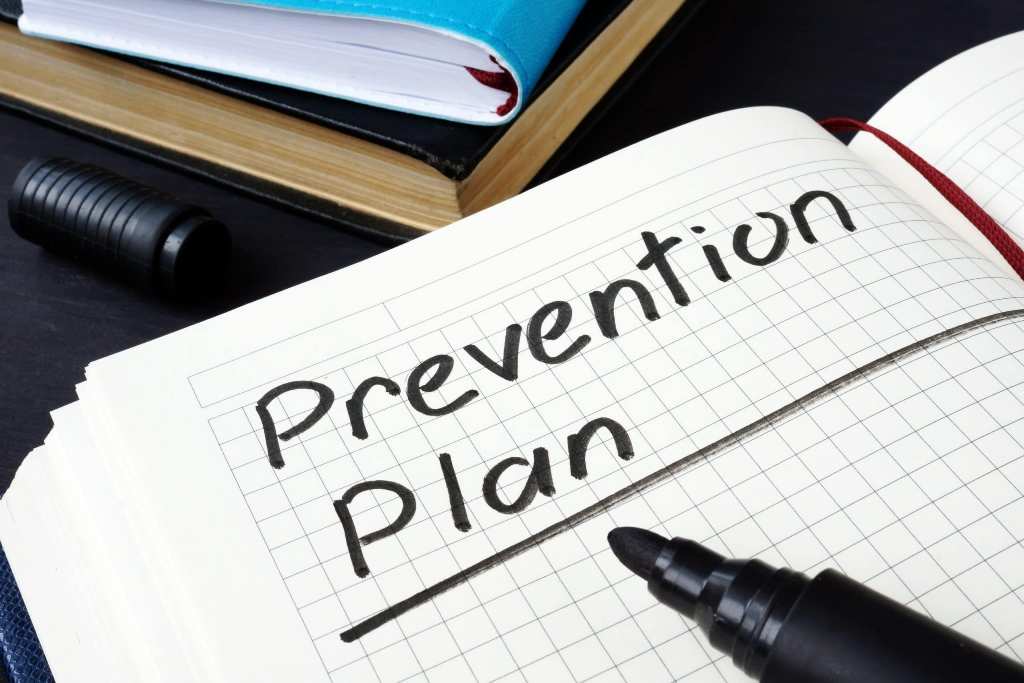
6 Tips for Coming Up with a Relapse Prevention Plan That Really Works
Relapse has long been accepted as part of the addiction recovery process. Almost all individuals who are in recovery from substance use disorders encounter relapse episodes at least once during their healing journey. However, as inevitable and predictable as it may be, relapses can still be one of the major setbacks for a successful addiction recovery, which is why preventing relapses becomes an important goal of addiction treatment.
Relapse prevention is an intervention strategy whose objective is to minimize the likelihood and severity of relapses following a patient’s cessation of using drugs. Relapse prevention is almost always a part of the treatment plan being offered by most drug abuse treatment centers, and this continuity is an integral element to ensure the success of the recovery process.
Stages of Relapse
One of the main principles of relapse prevention is identifying warning signs. Relapse is a gradual process rather than an instantaneous one, and patients often tend to exhibit signs that can indicate that they are on their way to a relapse episode. Therefore, the goals of relapse prevention revolve around teaching the patients to recognize these signs and to develop appropriate and healthy coping mechanisms to prevent relapse. Knowing the three main stages of relapse helps in achieving these goals.
Emotional Relapse
During this stage, patients are not consciously thinking about using drugs. They intend to remain clean because they are fully aware of the consequences that come with a relapse back to addiction. However, what occurs in this stage is an emotional manifestation of the burden of trying to keep clean. Patients tend to have poor self-care habits, and they may even isolate themselves to the point of not showing up to therapies.

Mental Relapse
The difference between mental and emotional relapse is the conscious desire to use drugs. This stage is especially difficult for patients because they are constantly trying to fight the urge to use drugs. Some signs of this stage manifest as strong drug or alcohol cravings, looking for relapse opportunities, and even actively planning for a relapse.
Physical Relapse
Physical relapse is the final stage of relapse. During this stage, patients start using drugs again without regard to the consequences. Patients who eventually fall into this stage are those who were not able to adequately cope with mental relapse and have found good relapse opportunities.
Tips in Creating an Effective Relapse Prevention Plan
There are no hard and fast rules in making a relapse prevention plan. The following, however, are helpful guides to remember to increase the success rate of your plan.
Identify Possible Causes or Triggers of Relapse
Most relapse episodes are triggered by specific emotions or situations where patients feel justified to use drugs. Some examples include emotional stress, things that remind them of their drug of addiction, and feeling hungry, angry, lonely, or tired, or a syndrome more commonly known as HALT. Being able to recognize these triggers will help patients deal with them promptly and adequately to avoid falling into a relapse.
Recognize Early Warning Signs of Relapse
A clear warning sign of relapse is change in behavior. When patients start isolating themselves or show reduced willingness to continue with treatment, it often indicates that they are on the verge of a relapse. Some patients will even start talking about using drugs again. Placing interventions during this stage is key to ensuring that a full relapse will not occur.
Look for a Strong Support System
Any patient who is undergoing treatment will benefit from a nurturing environment around people who make them feel safe. These people will also be the ones to help the patient cope with whatever challenges they may encounter during recovery. Their presence and support will be invaluable in creating an effective, patient-centered relapse prevention plan.

Create a Daily Routine
Many patients in recovery attest to the fact that having too much free time allows for more opportunities to go back to their addictive behavior. Making a full daily schedule with detailed activities lessens this window time. Apart from that, creating a routine promotes healthy coping mechanisms that further help in minimizing relapses.
Know the Consequences of Relapse
Being aware of the repercussions of a relapse back to addiction increases a patient’s motivation to remain clean. Patient education is an important aspect of this strategy, and healthcare providers play a central role. Having knowledge about their situation empowers patients to make informed and favorable decisions.
Maintain a Positive Outlook
An effective relapse prevention plan will be easier to achieve if patients strongly believe that it will work. Patients who maintain this attitude are more likely to stick to the plan and are deeply motivated by the desire to get better.
The journey to a successful recovery is long and difficult, but it is not impossible. By coming up with effective relapse prevention plans, healthcare providers can help patients stay on the right track.




